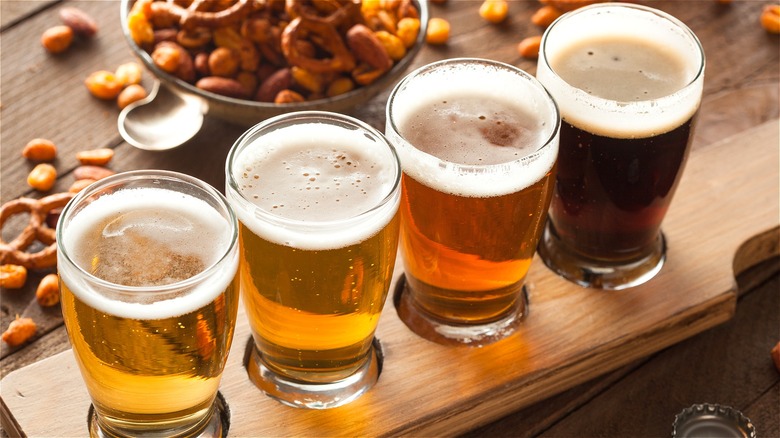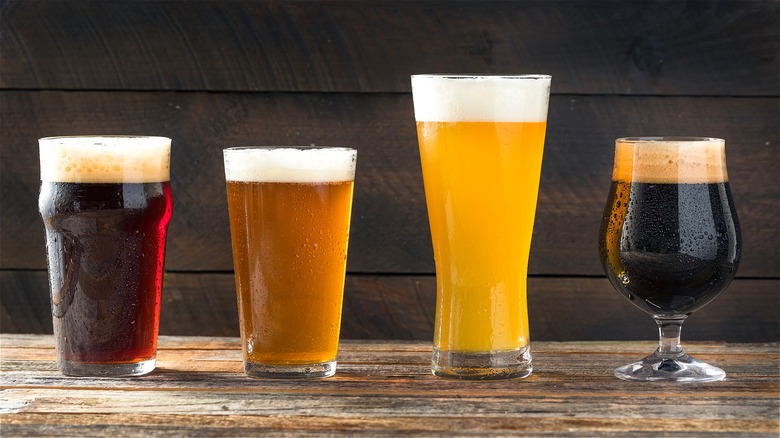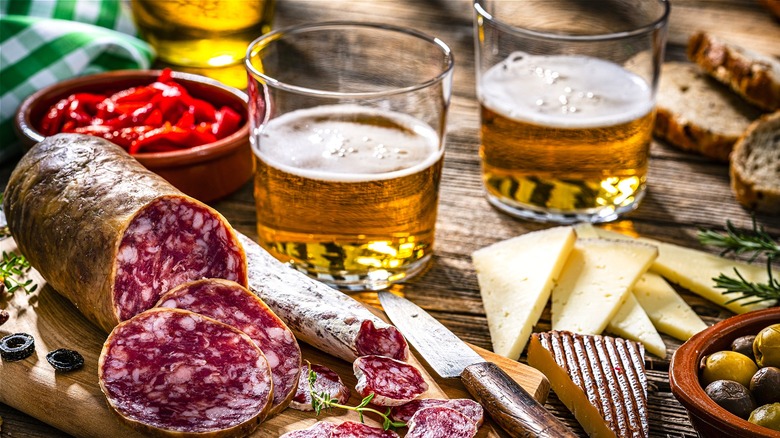The Beer-Sampling Mistake That Ruins Your Palate Immediately
Whether you're sampling a flight at your local brewery or tasting several kinds back to back, with the variety of beer available these days, you may experience palate overload at one point or another. While your instincts might blame this heightened sensitivity on your latest meal, you may note this taste disturbance as one of the few telltale signs you're not a beer person. However, with so many styles of beer available in the world, following a specific protocol when sampling is recommended.
Whether you're enjoying a flight or plan on having a few different beers in one evening, start with brews on the lighter end of the spectrum in terms of hops and ABV. Lighter beers tend to have more subtle flavors and are easier to drink. This is due to their altered brewing process; several grains are used to achieve a lighter body. Beers with a higher alcohol percentage are sometimes darker in color and take on specific flavor profiles. Conversely, hops are used in most craft beers to contrast beer's naturally sweet flavor in production. The plant's alpha acids provide brews with a sharp, almost bitter taste and add complexity and nuance to different varieties. Always start with a lighter brew if you don't want to overwhelm your tastebuds.
Which beers tend to have the highest concentration of hops and ABV?
If you want to equally appreciate each beer's unique flavor, start with lagers, pilsners, or blonde ales. While each variety has a specific taste, they all tend to have smooth, easy-to-drink qualities. Blonde pale ales tend to have lower ABV and fewer IBUs (International Bitterness Units) by volume, which measures the hops used in the brewing process.
As you move along your flight, slowly expose your palate to IPAs and stouts with a higher concentration of IBUs and ABV. American IPAs and stouts tend to have the highest amounts of IBUs next to imperial IPAs, which have the most overall. Imperial IPAs or double IPAs tend to be darker in color, have a higher ABV, and take on complex flavor profiles throughout fermentation. Save imperial brews as your last call, or enjoy a sample without planning to drink lighter varieties later in the night.
The best IPAs from the best craft breweries in America come with big flavors. The increased use of hops in darker, more robust beer leaves a long-lasting impact on your tongue, indirectly affecting the taste of everything else. Besides transmitting a bitter flavor, hops give floral, earthy, and complex notes to craft beers, which leave lasting impressions on your palate for better or worse.
How food affects adequate beer sampling
Starting with lighter beers and moving to heavier brews with more alcohol is a gift to your palate in more ways than one. Whether or not lighter beers are the healthiest beers you can drink, beginning your night with easy-to-drink varieties allows your taste buds to experience a range of flavors in one setting. You can also set yourself up for a more well-rounded beer sampling by paying close attention to your food choices. While you may want to save full pints of lighter ales for heavy multi-ingredient dishes and IPAs for spice-filled meals, fried, neutral-flavored foods or meals served with lots of cheese are solid options for most beer varieties. Overall, the carbonation in beer balances fattier, richer foods.
Also, consuming a range of different beers with one of your favorite meals gives you a better sense of how each variety interacts with your food of choice. However, if you have a flight filled with double IPAs, your best bet is to sample these pours before or after mealtime. Recommendations aside, everyone tastes hops and bitterness differently. Yet, to avoid overwhelming your palate with various flavors, start with lighter beers and work your way up. Alternatively, if you have a soft spot for IPAs, begin your night with a session IPA, which contains fewer hops and less alcohol.


